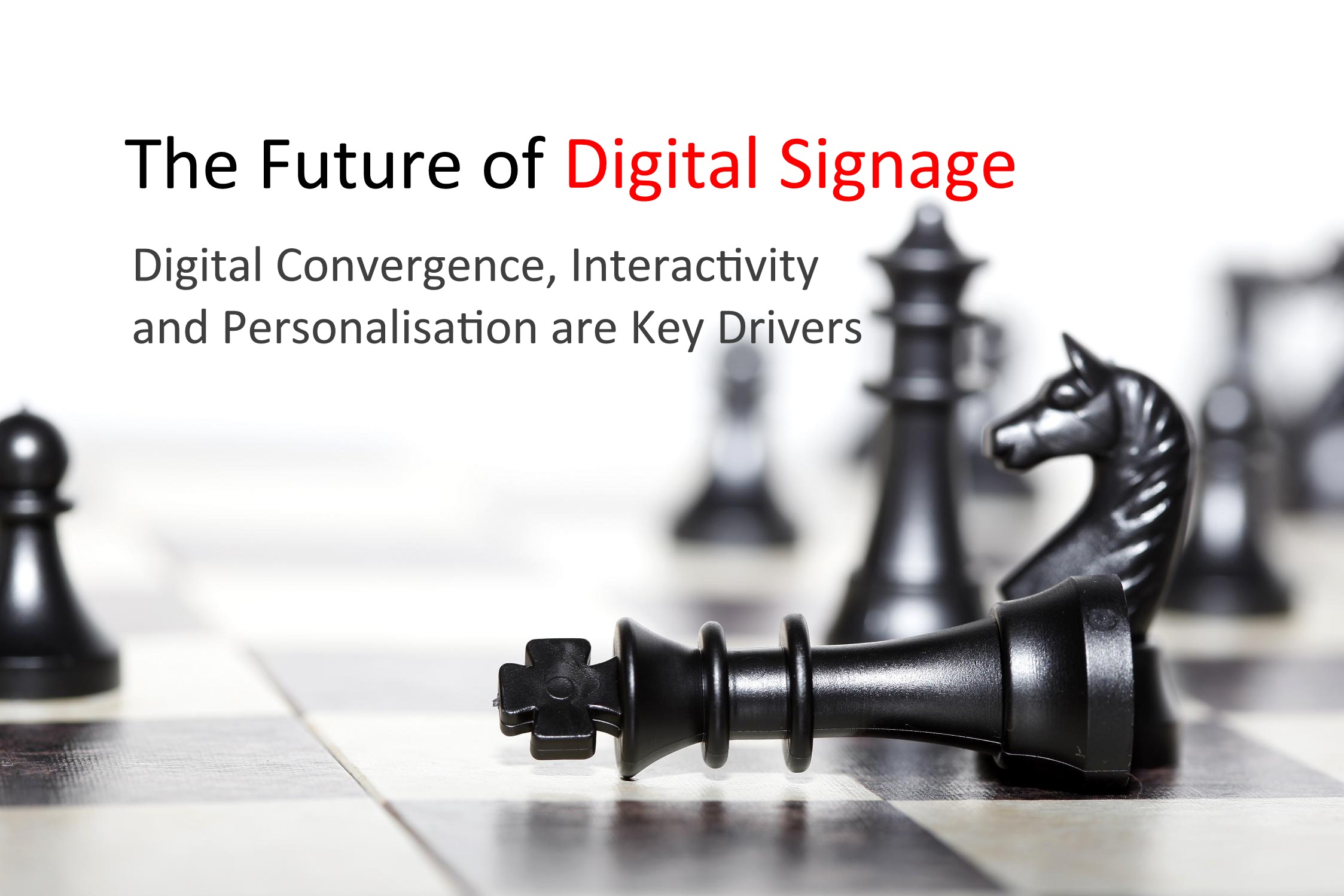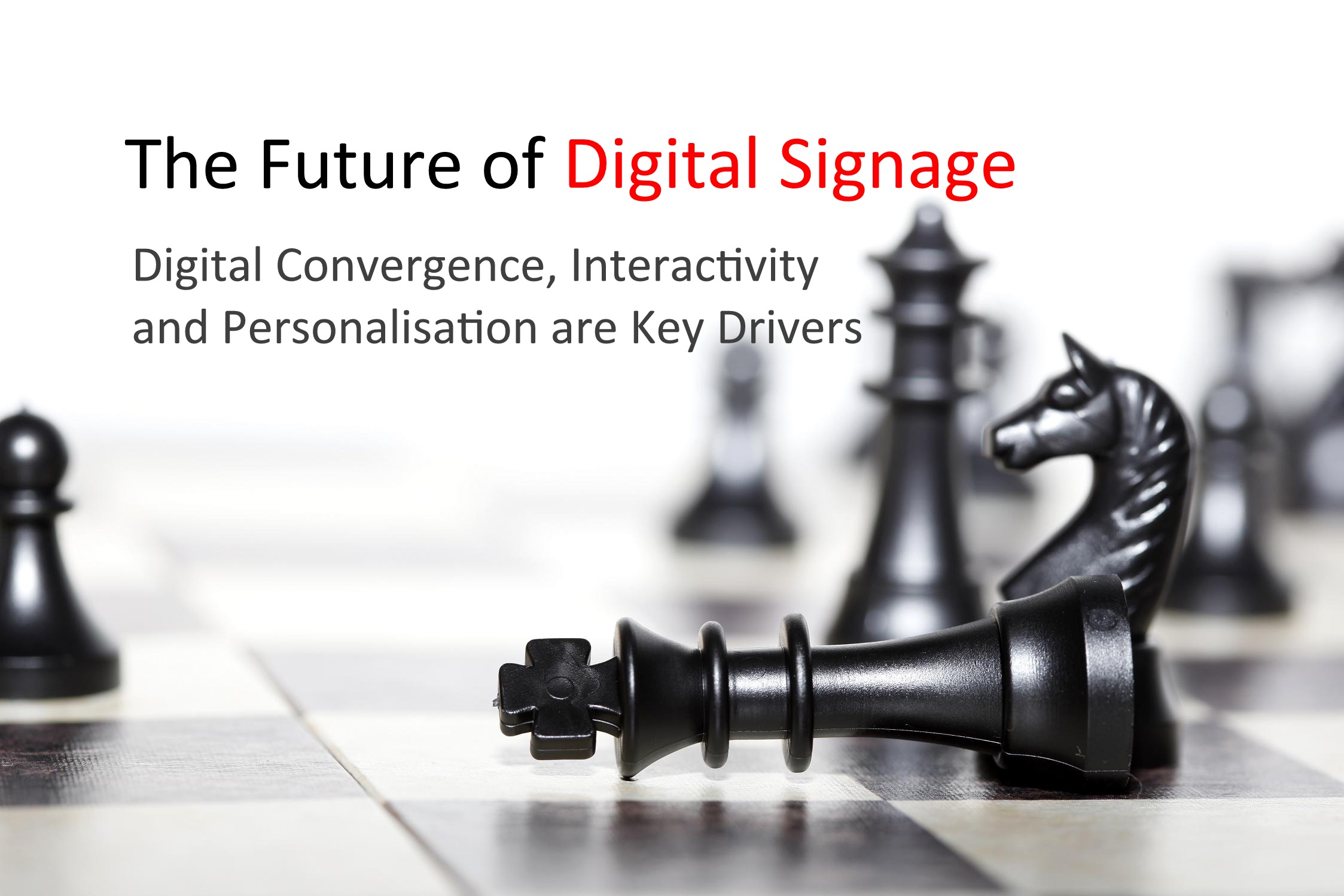
Digital Convergence, Interactivity And Personalization Key To Digital Signage’s Future
July 8, 2016 by guest author, Richard Murton

Guest Post: Cornelia Henkel, Advanced Digital Solutions

Cornelia Henkel
The ongoing digital convergence of digital signage, IT, consumer electronics, telecommunications and the media industry will pose major challenges on system integration issues, but also promise to augment viewer experiences to a completely new stage. Digital signage will evolve to digital engagement, enabled by an increased interactivity between both individuals and technologies.
These trends of increased convergence, interactivity and personalization will influence related topics including content, content management, hardware, and business intelligence (big data), which have all seen major advancements over the last years, pushing the industry’s overall progress.
Content
Content in digital signage networks has developed greatly during the last decade and is going to further evolve in future to produce more and more personalized messages to recipients.
While initially, mainly videos and animated graphics and images were distributed, today new formats have entered the marketplace including ready-made content from aggregators, user-generated content (UGC) and automated content.
UGC is any piece of media, including social media, YouTube, blogs and podcasts – media that’s been created by a consumer instead of an advertising agency. Social media platforms such as Twitter, Instagram and Facebook are increasingly exploited to insert interesting and visually appealing content on digital signage screens. Automated content is what I define real-time data and a blend of the above formats. Content managers will have to find the right mix between produced, ready-made content, UGC and automated content to deliver appealing messages.
But the content format, on its own, does not guarantee relevancy.
Field experiments show that the success of content depends on the appeal of the message, the product category, as well as on the context and the quality of exposure. In other words, regardless of which content format is chosen, advertisers still need to ask themselves essential questions such as:
- What are the target groups I would like to serve?
- What are their needs?
- Am I providing a sufficiently speedy network to provide a great consumer experience?
- Is the duration and frequency of content suitable to attract my defined target groups?
- Which content should be shown locally and at what level of localization should it be distributed?
Research shows that viewers are most responsive to content that satisfy their needs and they are least responsive to standardized brand messages.
Taking that into account, network operators and marketers must develop a winning mix of appropriate content formats, and use effective analytics tools to get a clear understanding about the needs of their target groups. In an increasingly converged environment, all these developments will certainly have an impact on the requirements of future Content Management Systems.
Content Management Systems
The most advanced Content Management Systems (CMS) manage personalized, multi-format, dynamic and event-triggered playlists. They can play any content at any device at any time, and can work off external triggers such as geo-data, RFID, gesture recognition, beacons or weather conditions.
For instance, a progressive CMS allows geo-data and social media input to attract the consumer’s interest by creating appealing content such as personalized promotions for a certain neighbourhood, or for loyalty card holders. Inserting updated weather forecast data, content can easily be adaptable according to changing weather conditions to guarantee relevancy at all times.
As a result of a greater variety of content formats and an enhanced interactivity, CMS platforms will become increasingly complex, and will require efficient (remote) control solutions to manage timing, performance and convergence issues across digital signage networks.
Hardware
Improved system performances and notable cost reductions in the hardware sector have had a strong impact on the digital signage industry in recent years, and will continue to influence the sector.
Performance specifications of players and projectors such as resolution, size, connectivity, noise and colour will further represent eligibility criteria. We will also see additional innovations in terms of product design and functionality, because of technologies such as networked LEDs. This evolution will enable designers to create smaller, less spacious devices that consume less power and are easily mountable.
Smaller screens (15 to 20 inches) will gradually take-off as effective retail signs at the POS, door signs and wayfinders. Furthermore, wayfinding solutions will be enriched by integrating mobile apps utilizing beacons and other technologies, e.g. to tie alert notification systems for directional assistance in the event of an emergency.
Sophisticated large full-HD resolution screens, 3D monitors (used with or without glasses) and LED displays provide high visual impact and will continue to be used for premium advertising applications. Devices such as cameras, proximity sensors, and WiFi sniffers will bring additional options to create personalized digital experiences across all industries.
The trend of improved system performances at a reasonable cost, together with the development of even more practical devices, and increased digital convergence, will not only push the further development of state-of-the-art systems, but also support the implementation of effective analytics tools to monitor the complexity of single processes and to effectively control Key Performance Indicators (KPI).
Business Intelligence/Big Data
Keeping in mind the overall goal of digital signage “to effectively transmit the right message, at the right time, at the right place.” the audience becomes an essential element of the digital signage ecosystem. The more accurate the picture of viewers, the more relevant can messages be formulated across networks. Online advertising has already become highly effective thanks to big data analytics (see Google, Facebook, etc.) that examine large amounts of data to exploit hidden patterns, correlations and other insights.
This knowledge and the new variety, volume and velocity of data will gradually be available in the digital signage industry. We will see supplementary market research and field experiments using state-of-the-art technologies including face pattern detection and analysis as progressive and supportive business intelligence/big data resources.
Privacy Concerns and the Difference between Facial Recognition and Face Analysis
The need to collect as much unique information as possible about consumers, to create personalized messages for consumers, has raised some privacy concern. This is why in many parts of the world new laws have been formed to exactly define the difference between facial recognition and face analysis (anonymous audience analytics or audience detection).
Facial recognition allows operators to identify or verify a person from a digital image or video frame from a video source. Normally, facial features are selected from the image and compared with a facial database. In many parts of the world, including Europe, consumers would initially have to accept the employment of this technology. Digital signage operators and marketers will have to find a winning formula to convince consumers of its advantages through unique messages that include relevant and highly appealing product information, promotions and service offerings.
In contrast, the implementation of face analysis in digital signage networks is in accordance with privacy laws, since this technology does not recognize individuals, but anonymously examines the viewer’s demographics such as gender, age group and mood. It is an efficient audience analytics tool to create dynamic content according to the profile of a person (or persons) in front of a screen.
Face analysis-based dynamic digital signage has been most successful in the retail sector to create relevant advertising messages that consumers are interested in. We will see a even greater number of related installations in future. Marketing teams benefit from the immediate feedback of their communication and will use the tool to effect tests and to continuously improve the precision of their campaigns. The technology will be used even in other areas, including the education sector, to increase consumer experiences.
With an increased accuracy of face analysis solutions and a constant trend of digital convergence, we will witness integrated solutions that deliver personalized and valuable content to the audience of Digital Signage networks.
Conclusion
The future of the industry looks positive, as we’re getting better all the time at realizing the core goal of producing and delivering relevant, timely, targeted messaging.



Leave a comment